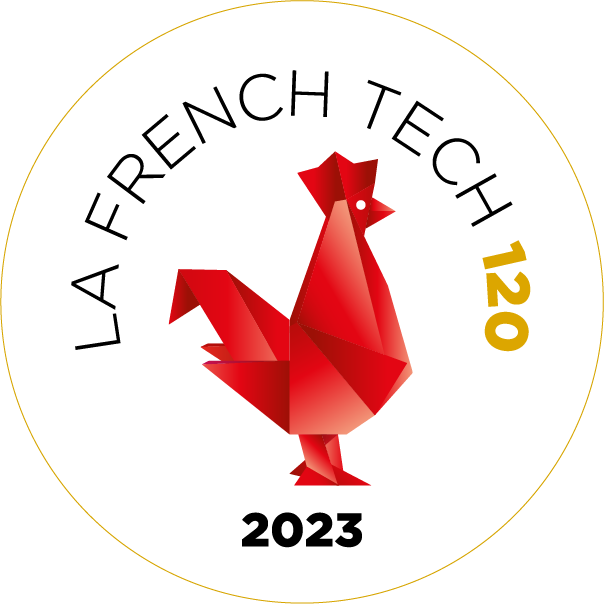The new approach of satellite Internet of Things in forest fires detection

Forest fires detection: a global challenge
Forests now cover 31% of our planet's land surface. As well as being home to the majority of the Earth's biodiversity, these fragile plant ecosystems play an important regulatory role in the fight against global warming, thanks in particular to their capacity to absorb around a tenth of the world's carbon emissions in their biomass, soils and products. Improving soil, air and water quality, forests are indispensable to the Earth and our survival.
In recent years, however, these natural allies against global warming have also become its victims, due to the intensification of heatwaves, droughts and fires, 90% of which are man-made.
Taking advantage of abnormally high temperatures, which are conducive to their spread, these mega-fires ravage thousands of hectares of forest all over the planet, in the northern hemisphere (France, Europe, North America) as well as in the southern hemisphere (Australia, Brazil). Every year, these forest fires account for 20% of global carbon emissions. The recent spectacular images of these fires attest to the scale of the tragedy, and unfortunately herald a multiplication of these increasingly frequent and intense phenomena in the very near future.
New space technologies and the Internet of Things via satellite, in particular, are contributing to a better approach to forest protection, particularly in terms of fire detection and reducing the impact of fires on the environment.
Satellite Internet of Things enables faster, more reliable forest fire detection than current technologies
There has recently been a paradigm shift in forest fire prevention. For both economic and ecological reasons: the cost of resources such as Canadairs, but also the sad fact that water resources on land are becoming increasingly scarce for putting out fires. Early detection is therefore one of the pillars of forest fire prevention today. Various technologies contribute to this and are deployed to support firefighters in their missions: video surveillance, drones, balloons, IoT via terrestrial network, satellites. Despite their effectiveness, however, these technologies do have their limitations. For example, the connectivity coverage of terrestrial IoT limits the deployment of sensors for temperature change, atmospheric pressure, humidity or smoke detection, as this connectivity only covers 15% of the Earth's surface. Unfortunately, satellite observation also fails to take into account the essential time factor, and therefore the urgency of deploying intervention solutions to stop fires. Satellites can only locate fires if they are large-scale, i.e. too late for emergency services, the ecosystem or even the surrounding population.
With a forest fire detection system integrating satellite-based Internet of Things, this time factor is considerably reduced. Thanks to Kinéis connectivity, coverage is unique and global.
How does Kinéis connectivity work?
Thanks to its constellation of 25 nanosatellites and 19 Ground Remote Stations (GRS), Kinéis locates and connects objects via terminals, wherever they may be on the planet. This strength lies in combining the technological innovation of New Space with the Internet of Things (IoT) to ensure low-speed, low-power, simple and reliable global connectivity.
Kinéis global connectivity enables objects to be tracked and monitored outside terrestrial coverage zones. As they pass overhead, the satellites collect messages or data from specific devices or sensors, and distribute them to the user within 20 minutes.
Thanks to their bidirectional communication mode, terminals can also receive messages from users and satellites (sending specific commands to optimize message transmission and energy consumption).
With their very low power consumption, the terminals have an autonomy of several years, sending messages only when necessary.
The Kinéis system enables the user to be informed of a particular event.

Kinéis performance for forest fire detection
The aim of a fire detection system based on satellite IoT is to spot the start of a fire in situ in just a few minutes, i.e. during its slow combustion phase. The aim is to quickly alert the fire department and extinguish the fire before it spreads. To achieve this, sensors for changes in temperature, atmospheric pressure, humidity or smoke detection are placed on trees or on the ground throughout the forest. Kinéis' satellite connectivity makes it possible to bypass terrestrial white zones, which are often the case in these vast forest areas.

Sensor from DRYAD ©DRYAD
In the event of fire detection, the Kinéis terminal sensor sends an alert message to one of the satellites in the constellation, which then transmits it to one of the ground station antennas. These ground stations transmit the data received by the satellite to the user via a service center. The service center then broadcasts an alert to a platform that can be consulted by the relevant authorities or Civil Security intervention teams to activate the emergency services. On site, firefighters can determine the extent of the damage and act accordingly.
These alerts are received within 15 minutes, helping to avoid large-scale disasters.
The benefits of a fire detection system with Kinéis connectivity:
- Early detection of forest fires (Early Fire Detection),
- Reliable, low-power large-scale protection,
- Frequencies (400 Mhz) enabling penetration through canopies,
- Improved risk prevention for civil security in the event of natural disasters,
- Improved situation assessment.
A concrete example of Kinéis connectivity in forest fire detection: the ForestSens project
With this in mind, Kinéis and Innovatec, a Spanish engineering company specializing in the research and development of technological systems, have launched the ForestSens project for 2022, with the aim of developing the first solution for the early detection and prevention of forest fires. This initiative, supported by the European Eureka-Eurostars program co-funded by the European Union as part of Horizon Europe, aims to help all those involved in forest fire prevention: public bodies, private landowners, civil security and insurers.
Innovatec has developed smoke detectors incorporating Kinéis connectivity, providing global coverage over terrestrial networks. These terminals remotely inform the Civil Security authorities or the fire department of the outbreak of a fire, in just ten minutes, via a searchable platform. These detectors also have the great advantage of consuming very little energy and, above all, of being autonomous thanks to their solar panel power supply. The ForestSens system avoids the need to install electrical infrastructure, particularly in remote areas, a costly and environmentally unfriendly solution. Today, Innovatec is developing prevention solutions with Kinéis connectivity for interested municipalities.
This concrete example of a space connectivity application for the Internet of Things provides a glimpse of how Kinéis connectivity can be used to prevent environmental risks and protect the planet.
"Keeping in touch with what matters to you”

Editor: Sébastien Martignac
In collaboration with Guillaume Triquet, Head of Natural Risks at Kinéis
Related article


About us
Created in 2018, Kinéis is a satellite IoT operator.
© kineis - IoT everywhere - 2023
Contact us
Adress
11, rue Hermès
31520 Ramonville-Saint-Agne
France
Phone
+ 33 5 61 39 47 00
Links
FAQ
Press
Newsletter
News
Privacy Policy
Cookie policy
Sitemap
Let's stay connected
